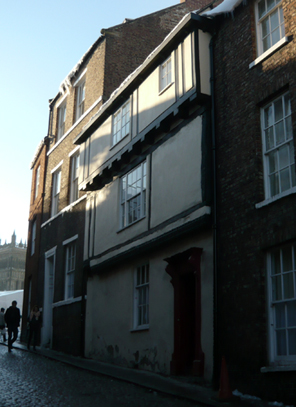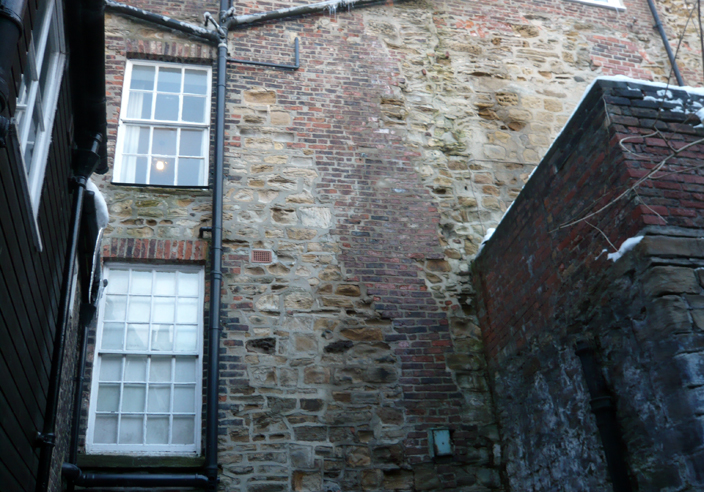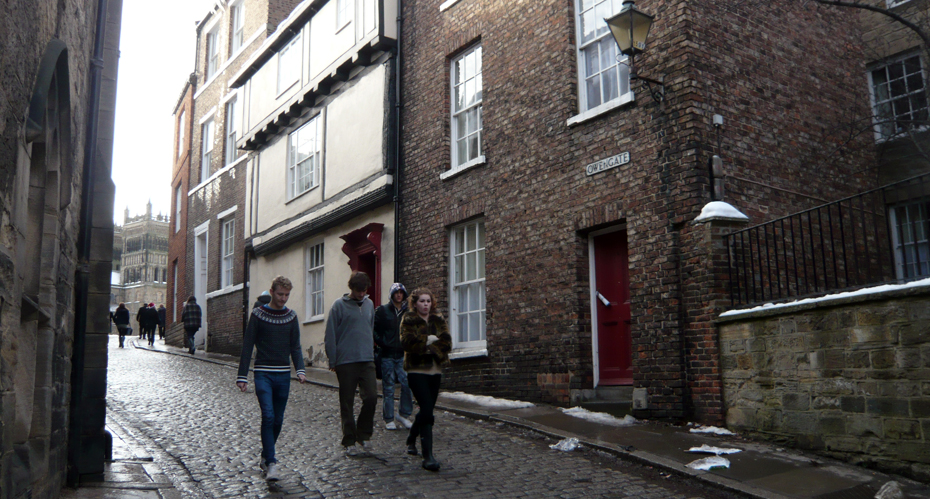The Buildings on Owengate

A sixteenth-century building on Owengate, now used as accommodation for students at University College.
Owengate, the road leading up to Palace Green, gets its name from the gate originally located at the top of the street. The gate was part of the Castle defenses, controlling access to the Castle and Cathedral.
Like all of the other gates, it has long since disappeared, but the road bearing its name still exists. Find out about the Castle's original defenses.
The Buildings on Owengate today
Apart from the nineteenth century Bishop's Court, currently Durham University's Law Department, and Moneyer's Garth, the buildings along this street were designed as residential structures.
One of the buildings on the right side of the street incorporates remains of the medieval Castle walls in its construction. Another dates from the sixteenth century, and still retains much of its original structure.

This image shows the back of a building on Owengate that was built along the line of the Castle walls and incorporates their remains in its construction. All the stonework is medieval, while the brickwork is from around 1800.
A 19th Century Almshouse
7 Owengate is an almshouse constructed in the 1830s by Durham University to replace a 17th century almshouse building on Palace Green. (An almhouse was a building that provided free, long-term accommodation, usually for older members of a community). The university needed to use the Palace Green Almshouse for educational purposes and built a new almshouse to relocate the eight occupants of the older building. Find out about the older almshouse on Palace Green.
An Institution, Not a Building
Because the 19th century almshouse building was essentially the same charitable foundation as its 17th century predecessor, the foundation inscriptions on the newer building acknowledge both John Cosin, the bishop who founded the earlier building two hundred years before, and Edward Maltby, the bishop of Durham at the time. This was a way of acknowledging the original founder of the almshouse as the patron of a social institution rather than of a building.
As the Owengate almshouse was constructed as a replacement, it maintained the same functional arrangement as its predecessor on Palace Green. It consists of eight rooms (four on each floor) and one communal area on the ground floor.
7 Owengate: built in 1830s to house the occupants of a 17th century almshouse on Palace Green, and now the World Heritage Site Visitor Centre.
Location, Wind, and Missing Chimneys
A prime location is not always a great thing. In this case, the location of 7 Owengate has meant that it has been exposed to wind erosion. This has led to the deterioration in some of the architectural details on the building facade.
One noticeable thing about the building is that its chimneys are missing. We know that there would have originally been chimneys, as there were five fireplaces inside. The chimneys probably would have been even more exposed to wind erosion than the rest of the building. They could have deteriorated to the extent of being dangerous, and were probably removed when more modern forms of heating were introduced into the almshouse.

